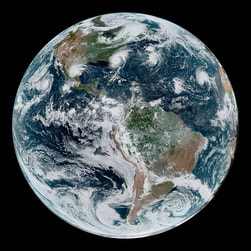EARTH
(Ksaahkomm)
|
The Earth (Ksaahkomm) is the largest rocky planet in the Solar System. It is the only planet with liquid water on its surface- vast oceans cover 2/3 of our planet. It has active volcanoes, drifting continents, and constantly growing mountains. The longest mountain range on Earth is under water, and is called the Mid Atlantic Ridge. It spans from Iceland almost to Antarctica. Earth has special rock types, like coal and limestone, that were created by something that hasn’t yet been discovered anywhere else in the Universe- life!
|

